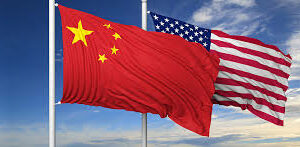The US and CHINA have had an old trade agreement dating back to 1784 when the ships pulled up to the New York harbor to trade cloth, pepper, tea, silk and spice. Well before China become a world production power. Over the course of the years the US-China trade agreement has been reformatted in correlation with whatever diplomatic disputes were at that time. In 2004 the first ever WTO complaint case was filed by the US against China.
Since the inception of President Donald Trump he has emphasized his disdain of China’s economic influence and rising power as a giant in energy, labor and production.
There have been reports that President Trump has issued an increase more tariffs for all Chinese-made products imported into the states. This shift truly affects our market simply from the uncertainty of the what the implications would be.
The S&P 500 already experienced 2% drop and the stock market of Hong Kong this Monday dropped 3.33%. As of Wednesday May 8th the Chinese stocks dropped another 3% for a total of 6% this week. Investors are growing increasingly unsettled on Trump’s tough approach, but US government officials have said that China has gone back on their original deal.
There have been reports that China has been refusing to change its laws in favor of parts of the deal and failed to agree on how to enforce the deal when its finalize. There is also the long lasting issues around the topic of Intellectual Property rights.
US Treasury Secretary Steven Mnuchin told reporters that Chinese negotiators were “trying to go back on language that have been previously negotiated…that had the potential of changing the deal dramatically.”
While global markets remain unsure as to how things will play out in the next upcoming months, the question now is, what will China do in response to Trump’s administration threatening policy?





